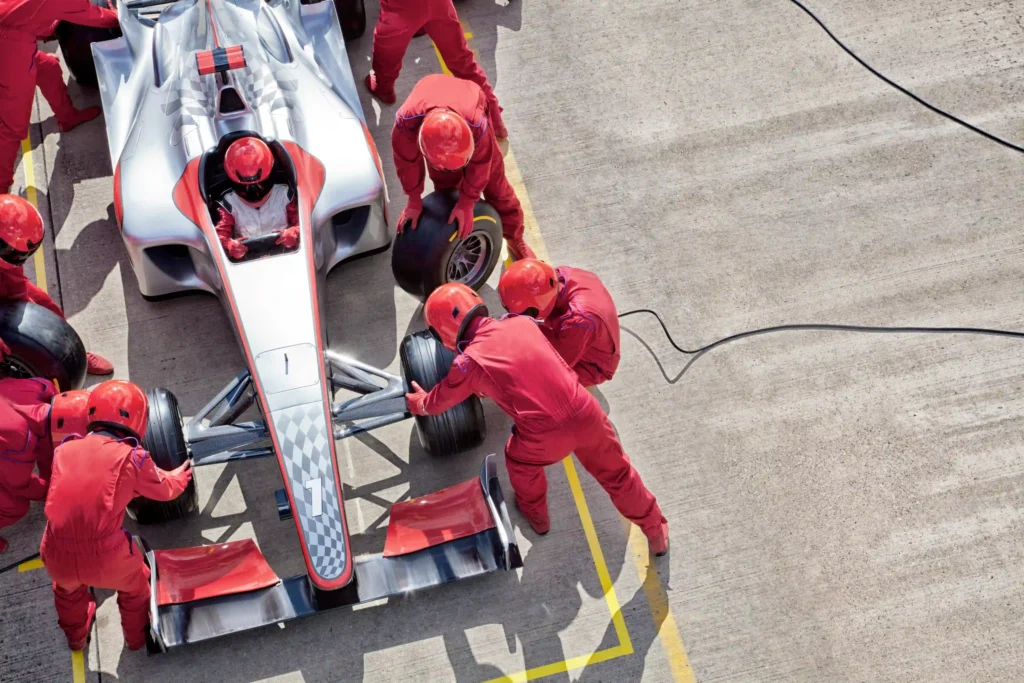10 Step Estimation Process Sample Checklist
View our 10 Step Estimating Process Checklist. This checklist should be tuned to the individual company’s needs and suggestions.

In motorsports, the difference between winning and losing is measured in milliseconds and millions. Budget caps have leveled the financial playing field, but success now depends on how strategically teams allocate every dollar. For those aiming to lead, cost control extends far beyond meeting budget limits. It directly influences how effectively teams can push their designs, technology, and performance.
Artificial intelligence (AI) is changing how motorsport teams manage resources. By analyzing vast amounts of data and forecasting the financial implications of design choices, AI-powered cost estimation provides insights that allow teams to make informed decisions before costs grow beyond control. With tighter regulations and the relentless pace of competition, these insights are becoming necessary for sustained success.
One example of a motorsport team leveraging artificial intelligence (AI) and advanced software solutions to enhance performance is Williams Racing. In February 2025, Williams announced a landmark multi-year partnership with software firm Atlassian, marking the “biggest partnership deal” in the team’s 48-year history.
This collaboration aims to transform Williams into a World Championship-contending team by integrating Atlassian’s AI-powered collaboration software across the organization’s operations. By adopting Atlassian’s technology, Williams seeks to improve teamwork and collaboration, thereby enhancing their competitiveness on the track.
The introduction of FIA cost regulations has reshaped how teams operate. Every investment, from wind tunnel testing to race simulations, must demonstrate a measurable return. Overspending in one area means reductions elsewhere, which can create lasting performance disadvantages over the course of a season.
The difference between winning and losing is measured in milliseconds and millions. Budget caps have leveled the financial playing field, but success now depends on how strategically teams allocate every dollar. Since 2021, the FIA has enforced a cost cap that started at $145 million, dropped to $140 million in 2022, and now sits at $135 million, adjusted annually for inflation. The cap covers most performance-related expenses — from car design and development to race operations and simulator work — while excluding driver salaries, top executive pay, marketing, and travel.
For those aiming to lead, cost control extends far beyond staying within budget. Breaching the cap, even slightly, can result in stiff penalties, including financial fines and reduced aerodynamic testing time. Teams must now think like engineers and accountants, weighing how each dollar spent influences their ability to push designs, deploy technology, and ultimately win on track.
Modern motorsport teams face constant trade-offs. They must evaluate where to apply their limited resources across research, development, and production. Without clear cost visibility, even small missteps can accumulate, eroding long-term competitiveness.
One team that experienced the consequences of such missteps is Red Bull Racing. In 2021, the team exceeded the FIA’s cost cap by 1.6% — roughly £1.86 million. This breach resulted in a $7 million fine and a 10% reduction in aerodynamic testing for the following year. While Red Bull accepted the penalties, the situation highlighted how exceeding financial limits, even marginally, can trigger regulatory setbacks that compromise future performance.
To avoid this kind of scenario, teams are increasingly turning to data-driven strategies.
Consider a team that shifts just 0.1 percent of its budget from aerodynamics to materials testing. This small change results in a 250-gram weight reduction per component. Over a race, the lighter design improves fuel efficiency and trims lap times by 0.02 seconds which could potentially be the difference between starting in the front row or mid-pack. Over a season, those tiny gains add up and shape championship outcomes.
This is exactly the kind of insight AI-powered cost estimation can unlock. By modeling trade-offs in real time and forecasting the impact of each adjustment, AI enables teams to make smarter, data-backed decisions, before a single part hits the track.
As development accelerates and regulations evolve, AI-powered cost estimation is becoming a standard part of motorsport strategy. Teams that apply this approach will strengthen their competitive position by directing spending toward the areas that provide the highest performance returns.
Galorath’s platform of solutions, including SEER®, helps motorsport teams turn financial planning into a competitive advantage. With accurate cost prediction, real-time analysis, and scenario modeling, SEER enables smarter decisions at every stage of development from concept to race day.
Rethink how your team allocates resources. In a sport where milliseconds matter, spending strategically can be the edge that sets you apart.
Explore our guide to integrating AI into your planning process.
Make smarter spending decisions faster — no data science degree required.
10 Step Estimation Process Sample Checklist
View our 10 Step Estimating Process Checklist. This checklist should be tuned to the individual company’s needs and suggestions.
Estimating Total Cost of Ownership (TCO)
Find out how you can use Total Cost of Ownership (TCO) model to create an estimate which includes all the costs generated over the useful life of a given application.
Should Cost Analysis
Learn how Should-Cost Analysis can identify savings opportunities and drive cost efficiency in procurement and manufacturing processes.
ROM Estimate: The First Step Towards a Detailed Project Plan
Find out what ROM (rough order of magnitude) estimate is and why is it a crucial element of every project planning cycle.
Software Maintenance Cost
Find out why accurate estimation of software maintenance costs is critical to proper project management, and how it can make up to roughly 75% of the TCO.